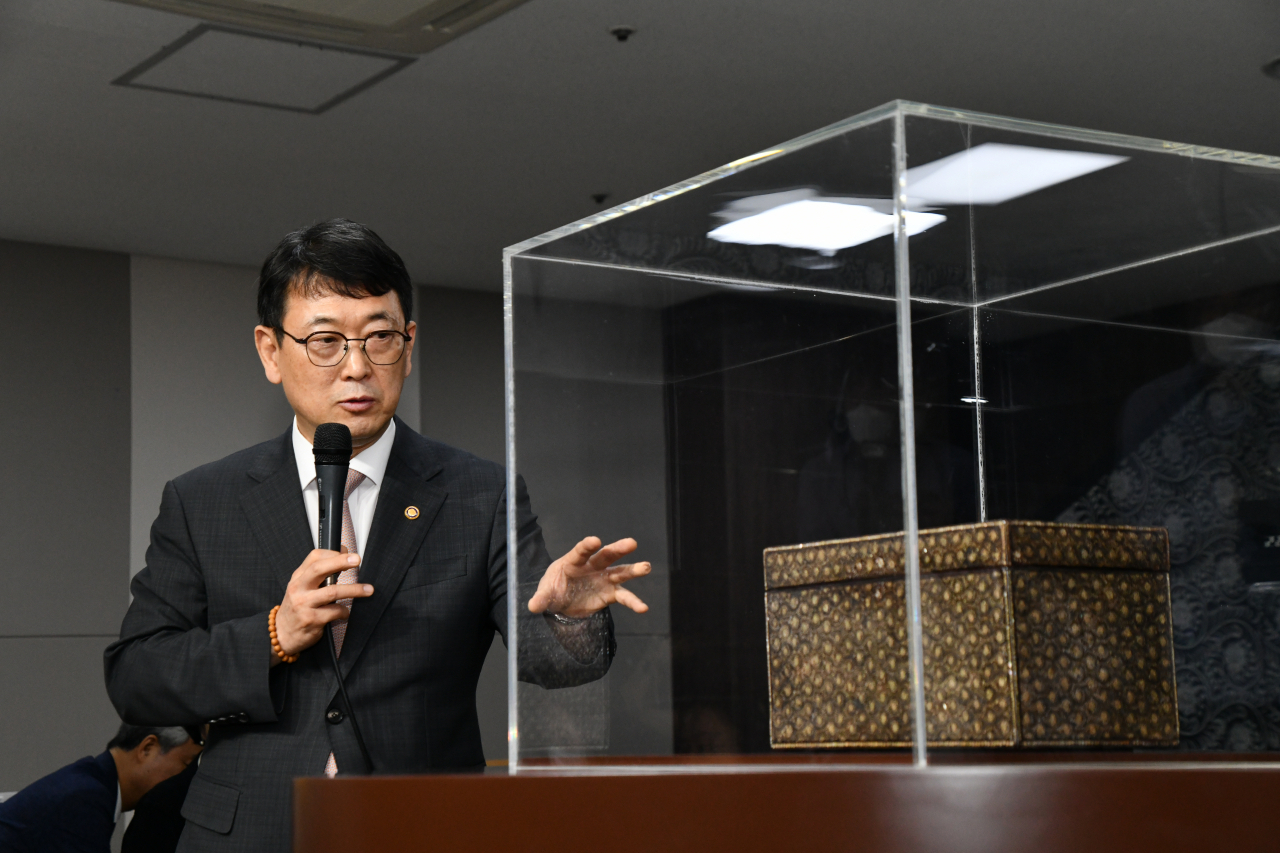 |
Choi Eung-chon, head of the Cultural Heritage Administration, discusses the repatriation from Japan of a lacquered mother-of-pearl box inlaid with chrysanthemum and vine scrolls at the National Palace Museum of Korea on Sept. 6, 2023. (CHA) |
Mother-of-pearl lacquerware dating back to the Goryeo Kingdom (918-1392) represents a work of art of exceptional sophistication recognized worldwide -- a reason to make continuous efforts to reclaim other similar pieces located overseas, according to the Cultural Heritage Administration.
At a lecture Wednesday dedicated to the topic, Choi Eung-chon, the CHA’s chief since May 2022, recalled the repatriation of a lacquered mother-of-pearl box inlaid with chrysanthemum and vine scrolls, or “najeonchilgi,” from Japan in July last year.
The approximately 800-year-old Goryeo-era box shows painstaking attention to detail, Choi said during a rare in-person public gathering, exploring how such “elaborate lacquerware had surprised” neighbors like China at the time.
“Out of the 20 pieces scattered across the world, we have three or four,” Choi said of the whereabouts of similar Goryeo-period mother-of-pearl lacquerware pieces, citing Japan as the country where most of the missing pieces are located. Wars between the two countries were the major reason for the Asian neighbor to have obtained so many of the works.
Lacquerware is most commonly found in the shape of a box, like the piece repatriated in July, Choi said, adding the box was used for Buddhist scriptures during the period when the Goryeo Kingdom had embraced Buddhism as the state religion.
The level of craftsmanship, however, declined gradually in the Joseon era (1392-1910), according to Choi, who noted that works showing the incremental shift are on exhibition at Japanese museums.
“The thing about bringing back our artworks like lacquerware is that we have to sacrifice quite a lot to make that happen,” Choi said, describing reaching out to private collectors in Japan as the last resort. The over-the-top compensation they seek is the immediate hurdle, Cho added.
Another problem has to do with the fact that those Goryeo pieces are slowly losing their authenticity as repairs are made as part of “preservation” efforts. Hinges in particular get modified -- sometimes to the point where the change destroys the piece’s originality.
That is why the repatriation of the lacquerware box from Japan in July was all the more unprecedented, Choi said.
For the first time in history, the CHA had brought the piece to Korea before a formal transfer because it looked too impeccable to have suddenly emerged from nowhere, according to Choi. A private Japanese collector whose works were previously unknown to Korean authorities had come forward with the box.
“You have to see it yourself to really appreciate it,” Choi said at the lecture held at the National Palace Museum of Korea in central Seoul. The museum showcased the box in a special monthlong exhibition that ended Sunday.







![[Today’s K-pop] Blackpink’s Jennie, Lisa invited to Coachella as solo acts](http://res.heraldm.com/phpwas/restmb_idxmake.php?idx=644&simg=/content/image/2024/11/21/20241121050099_0.jpg)